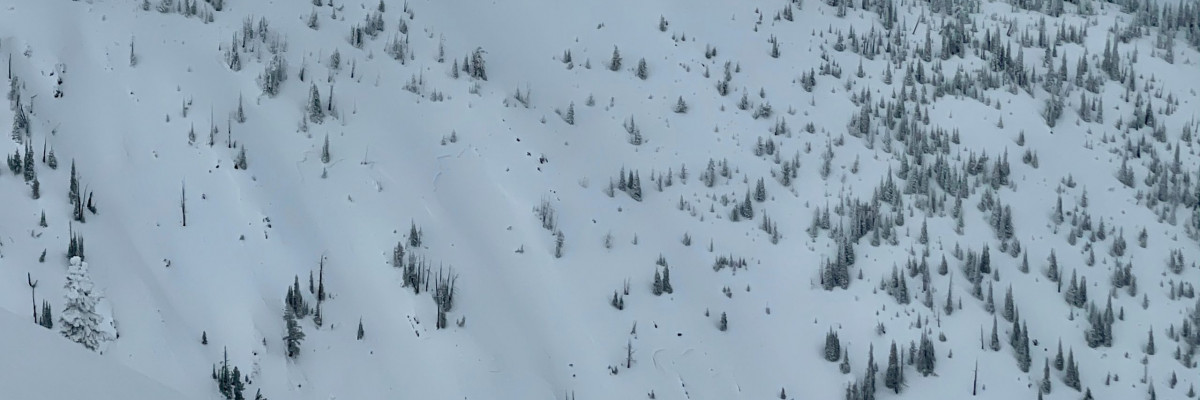The avalanche danger in the west central Montana backcountry is considerable.
Good Morning. This is Jeff Carty with the West Central Montana Avalanche Center advisory on Tuesday, February 9, 2021. This advisory is sponsored by Spark R&D. This advisory does not apply to operating ski areas and expires at midnight tonight. The USDA Forest Service is solely responsible for its content.
It seems like it is properly winter all of a sudden. New snow again yesterday, 4-10″, and cold temperatures have it feeling right for the season. Up to 48″ of new snow fell in some areas over the last week, this is compacting to around 2.5′ as it settles. It is great to look at a pit wall and see a uniform mass of snow over two feet thick without a crust or facet layer, although this is still something that plagues our lower snowpack. While the skiing and riding have improved dramatically, it is not open season yet. Dangerous avalanche conditions exist. Caution is still warranted, and travel on slopes steeper than 30º is not yet recommended.
Winds increased yesterday and ample fresh snow was loading leeward slopes. Wind slabs were very touchy and growing in the Rattlesnake yesterday. There was evidence of wind loading and mid-storm wind slab avalanches at Lolo, the Southern Missions, and the Bitterroot. Winds started from the west yesterday and switched to northerly. Moderate northeast winds are forecast for today will continue to load slopes. Multiple aspects may have wind slabs due to these shifting winds. Prior to the storm, cornices were already large and collapsing. Any that remain are larger, unstable, unpredictable, and could trigger avalanches if they fall.
There were widespread natural avalanches throughout the forecast area this weekend. These slid on existing persistent week layers such as the January 13 facet/crust combo. For example, a fairly large avalanche, several hundred feet wide, with up to 4-foot crown happened this weekend in Jenny Bowl. Long-distance propagation like this is typical of persistent weak layers. The new snow sits on various facet layers throughout the forecast area, and we are seeing propagation in these during stability tests. It is possible to trigger avalanches within the facets, and shallower avalanches may step down to deeper layers creating large avalanches.
Last week, there were 15 avalanche fatalities in the US, including one in the northern Swans on Saturday. This is the most avalanche deaths in a week since 1910. The snowpack throughout the western US is unstable and precarious. Don’t add to the numbers. Now is not the time to push into steep terrain. The snowpack needs time to settle out and bond.
The Bottom Line
Travel in avalanche terrain is not recommended, dangerous avalanche conditions exist. Avoid slopes over 30º and runout zones. Remotely triggered avalanches from the side, below, or above are possible. Natural avalanches are possible, human triggered avalanches in wind slab are likely.
Carry a beacon, shovel, and probe. Remember to reassess conditions throughout the day and stay alert for signs of instability. Dig a pit. Look for red flags.
Upcoming Education Events:
Please visit our education page for an up to date list of regional educational events and course offerings. Below are a few select events and opportunities to check out.
- February 10th, 6-7:30 PM MST | FREE Online 1.5-hr Avalanche Awareness Session | Missoulaavalanche.org event | Delivered by A3 Pro instructors | Get more details and register HERE
Public Observations
Thank you to everyone who has taken the time to send in a public observation. Please keep sharing what you find and see while out in the backcountry. This online forum is a great resource to glean information about current conditions.
You can now text us your observations to (406) 219-5566 when you don’t have time to fill out the observations page. Texted observations won’t get posted on the website, but will be used in the development of the forecast.
Ski and ride safe.
























